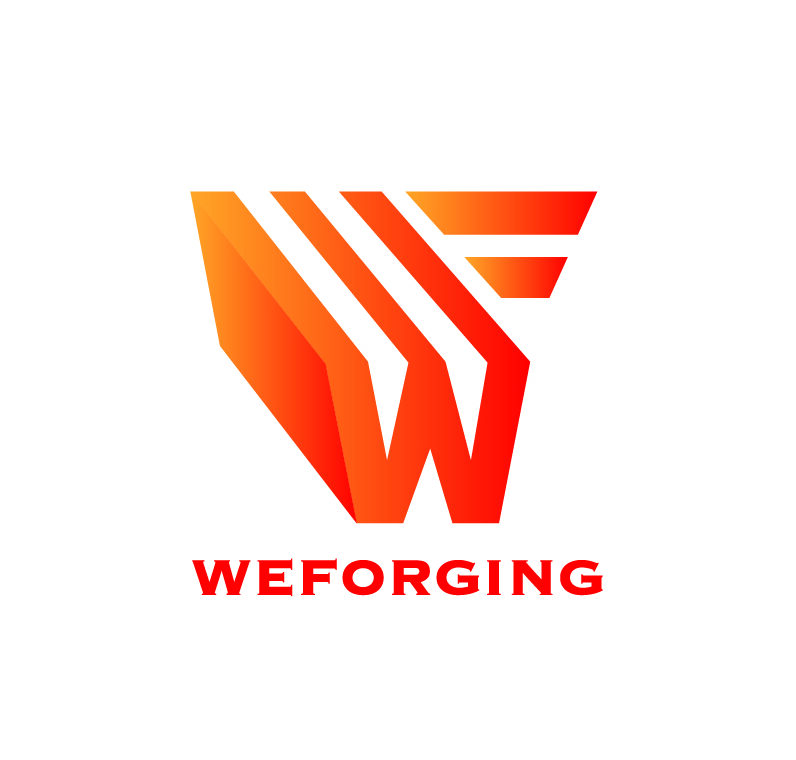Heat Treatment for Forgings — Enhancing Strength and Reliability
Heat treatment for forgings is a critical process that enhances the strength, hardness, and stability of forged steel without changing its shape.While hot forging and cold forging define the geometry and grain flow of the metal, heat treatment refines its internal structure through controlled heating and cooling.
At Weforging, precise thermal processing ensures every component achieves the right balance of mechanical performance and durability for demanding industrial applications.

What Is Heat Treatment in Forging?
Heat treatment is a precise and carefully controlled process that enhances the performance of metals and alloys through managed heating and cooling cycles. By adjusting temperature and duration, manufacturers can optimize hardness, strength, ductility, and corrosion resistance. As a result, components achieve improved wear performance, structural integrity, and long-term stability for demanding applications.
This process involves specialized techniques such as quenching, tempering, annealing, and normalizing—each refining the metal’s internal structure and mechanical balance. At Weforging, it is applied to forged gears, shafts, and other precision components, ensuring superior durability and dimensional accuracy under high loads. Moreover, when seamlessly integrated with CNC machining and precision testing, our heat-treated forgings deliver consistent quality, reliability, and performance across many industry sectors.
Heat Treatment Processes
Heat treatment for forgings is a precisely controlled thermal process. Metals are heated to exact temperatures and cooled under defined conditions. This method refines mechanical properties while maintaining original geometry. It enhances strength, hardness, and structural stability for demanding applications. As a result, components deliver consistent performance and long-term reliability across industries.
In high-performance fields such as oil, gas, and heavy equipment manufacturing, heat-treated forgings are essential. Engineers rely on them for precision and durability in challenging environments. Each stage—heating, holding, and cooling—is carefully optimized. This ensures ideal microstructure and balanced properties. Consequently, every component maintains stability and dependable performance throughout its service life.
Main Heat Treatment Methods for Forged Steel
Weforging applies several essential heat treatment for forgings methods to refine grain structure, control hardness, and ensure long-term reliability. Each process is carefully adjusted to match the composition and performance requirements of the forged steel components.
Annealing — The metal is heated and slowly cooled in a furnace. This process softens the material, improves ductility, and relieves internal stress for better machinability.
Quenching — The heated metal is rapidly cooled in water, oil, or air. It increases hardness and strength, ideal for wear-resistant components in heavy machinery and energy applications.
Tempering — Performed after quenching to reduce brittleness while maintaining strength. The metal is reheated to a lower temperature, achieving a balance of toughness and durability.
Normalizing — The metal is heated above its critical temperature and cooled in air. This refines the grain structure and enhances strength, stability, and uniform mechanical properties.
Benefits of Heat Treatment for Forged Components
Higher Strength and Wear Resistance
Improved Fatigue Life and Dimensional Stability
Enhanced Surface Hardening for Key Areas
Stable Geometry and Structural Integrity
Excellent Machinability and Performance Consistency
Applications of Heat Treatment in Forging
Heat treatment enhances the strength and reliability of forged components across many industries.
Automotive Industry
Quenching and tempering improve forged shafts, gears, and connecting rods, enhancing wear resistance and fatigue life.Energy & Power Generation
Turbine shafts, flanges, and rotor parts receive precise heat treatment for stability under thermal and mechanical stress.Hydraulic & Construction Equipment
Hydraulic cylinder forgings, valve bodies, and couplings gain strength, precision, and long-term operational consistency.Marine, Mining & Wind Power Systems
Heat-treated rolled rings and bearing parts maintain corrosion resistance and structural balance under demanding conditions.
Conclusion
From the forging process to heat treatment for forgings, Weforging delivers fully integrated manufacturing solutions for high-performance forged steel components.By combining advanced forging, precision CNC machining, and controlled thermal treatment, we ensure every part achieves superior strength, dimensional accuracy, and long-term reliability.
To discuss your project or request a technical quotation, click the button below or contact us — our engineering team will provide tailored solutions that meet your performance and quality requirements.

